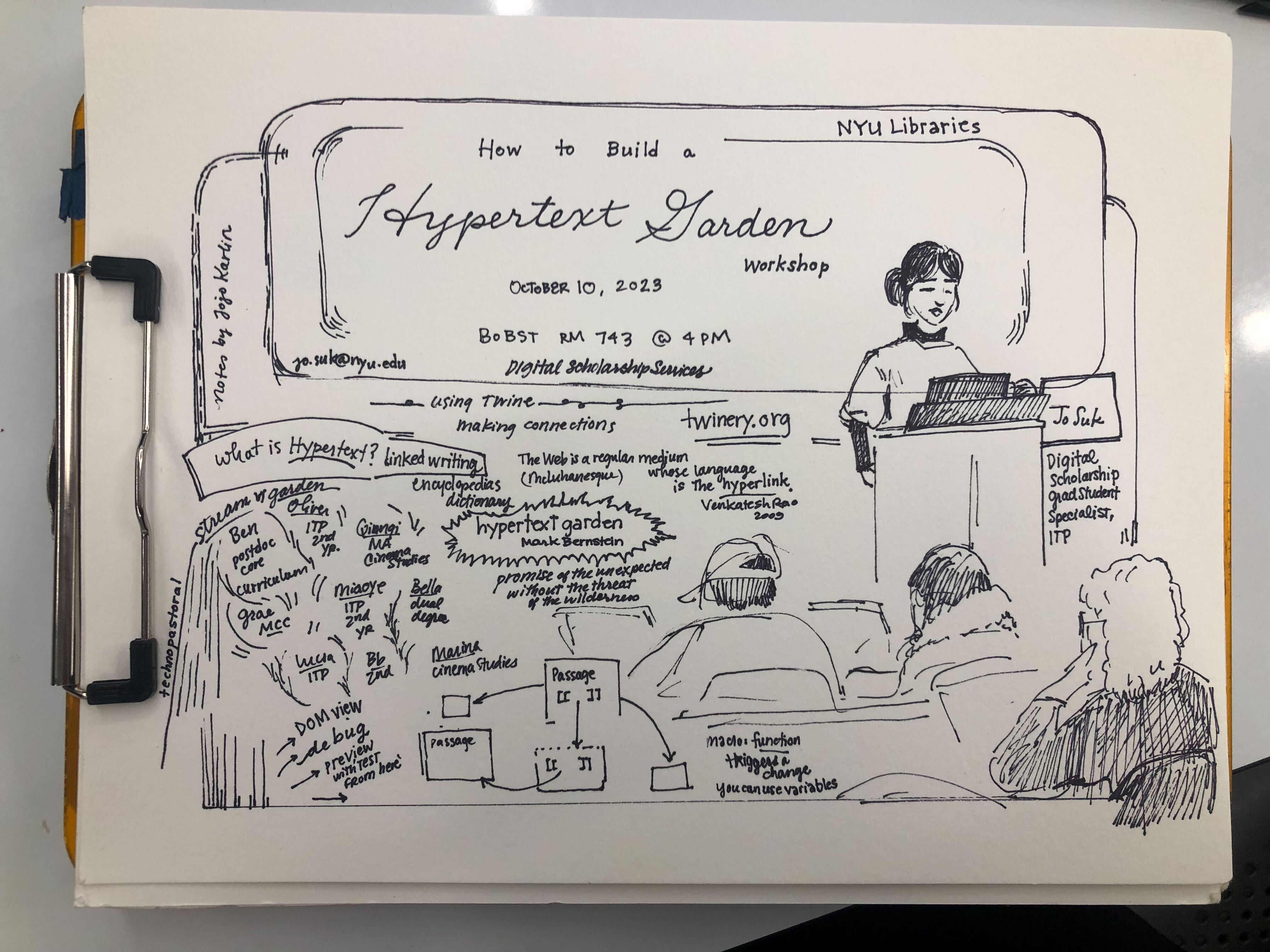Last month, I led a workshop called How to Build a Hypertext Garden at Bobst Library. First run in the spring semester, the workshop brought together faculty and graduate students across the arts and humanities to explore the art of link-making. In the exercise portion, attendees got hands-on with Twine, an interactive storytelling tool, to make a web of hypertext passages.
When I first began planning this workshop, I was committed to the idea of hypertext gardens early on. The hypertext garden can be understood as a series of texts interconnected by hyperlinks in a manner that allows the reader to “wander” through each passage. I was drawn to this notion because I’ve always been curious about the relationship between things, and I saw the hyperlink as an embodied relation between web pages.
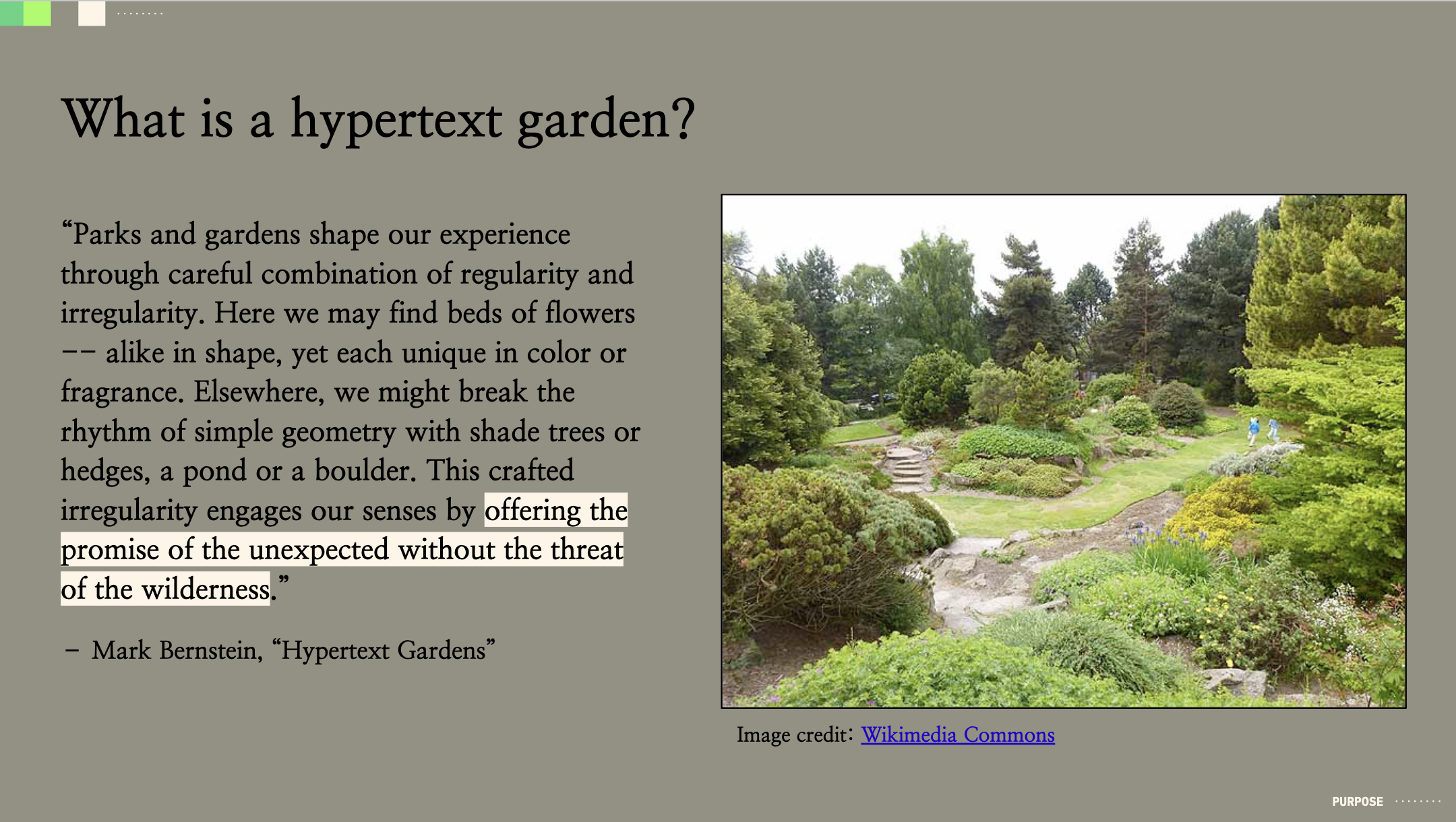
Next came the question of how to teach people to build one in under an hour. Writing in HTML would have been the most natural option, but I worried that we would end up spending most of our time on HTML fundamentals, of which there are many, and many of which would be reckless to rush through. I wanted the participants to have more time to experiment with their connections, so I looked for tools that would facilitate the linking process. After trying out different web editors and web builders, I landed on Twine as my medium.
Twine is a free and open-source tool for building text-based narratives endemic to the web browser. It was created by Chris Klimas in 2009 and has since been lovingly used and maintained by artists, writers, and independent game developers. Coding experience is not required to use Twine, but the tool has many programmable builds for those who are comfortable using CSS and Javascript.
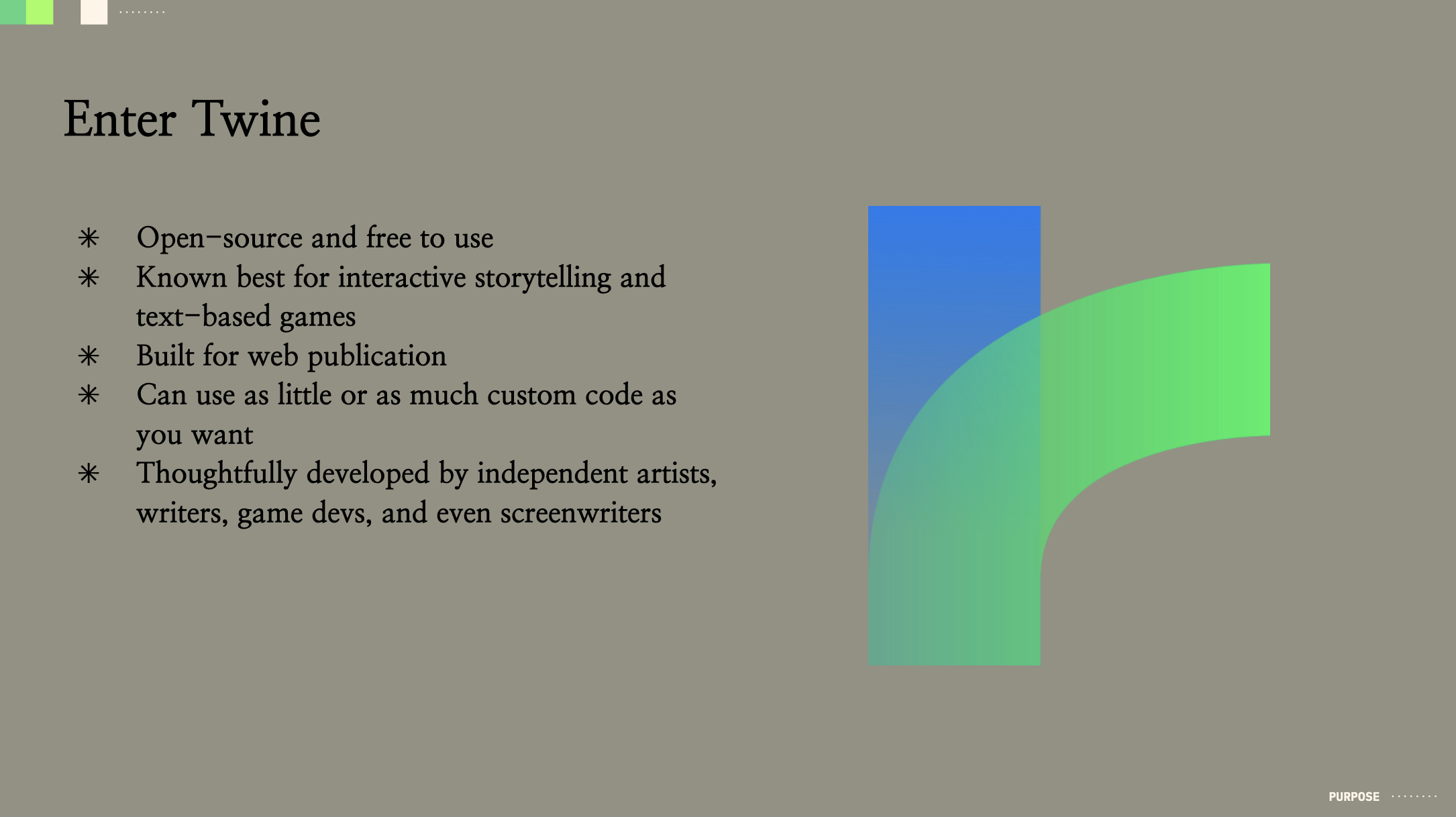
It was this versatility that made me choose Twine for the workshop. Given the workshop was open to the school, I expected attendees to come with varying degrees of familiarity with code. I also knew to expect some attendees from my own graduate program, ITP, where students are required to take an intro to programming course upon entry. I wanted everyone to feel like they could gain something new from the workshop, and Twine’s scalability permitted just that.
The workshop began with a brief introduction to hypertexts, hypertext gardens, and some examples of each. Following the introduction was a warm-up exercise to get us thinking rhizomatically. In the first iteration of the workshop, the exercise was done collectively, with all the attendees contributing to a mind map on Google Slides. I asked people to volunteer fragments from their phones’ notes app, and together we drew logical connections between the resulting mental traces. During the second run of the workshop, I had the attendees sketch out their mind maps independently so they could ideate around a personally relevant field of interest.
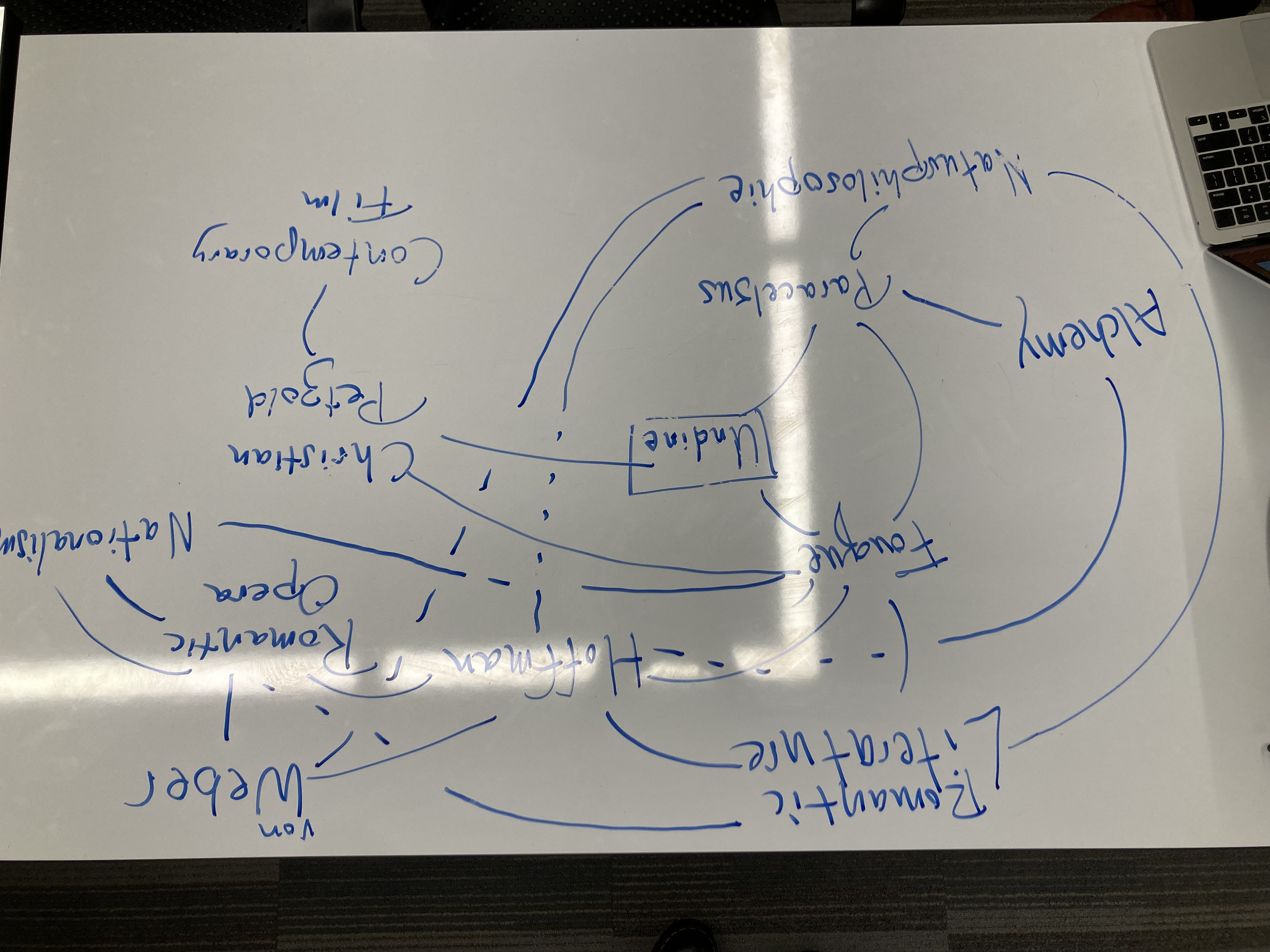
For the remaining portion of the hour, we rolled up our sleeves and practiced building in the Twine app. I took the attendees through linking, basic styling, and special components like variables and macros. I also provided a cheat sheet so people could experiment at their own pace as I moved the lesson along. Sensing that a curious few might want to continue with their Twine works after the workshop, I took additional care to include tips on troubleshooting and publishing.
Though I did not catch a glimpse of all the resulting hypertext gardens, the few I did see were true to each attendee’s interests, which gave me the sense of reading their thought trails as I perused the garden. After the workshop, a few attendees expressed plans to incorporate Twine into their practice as a mind mapping tool, a personal wiki, and even as an introductory programming tool. I was happy to know I had guided them through the first steps of a longer journey with Twine.
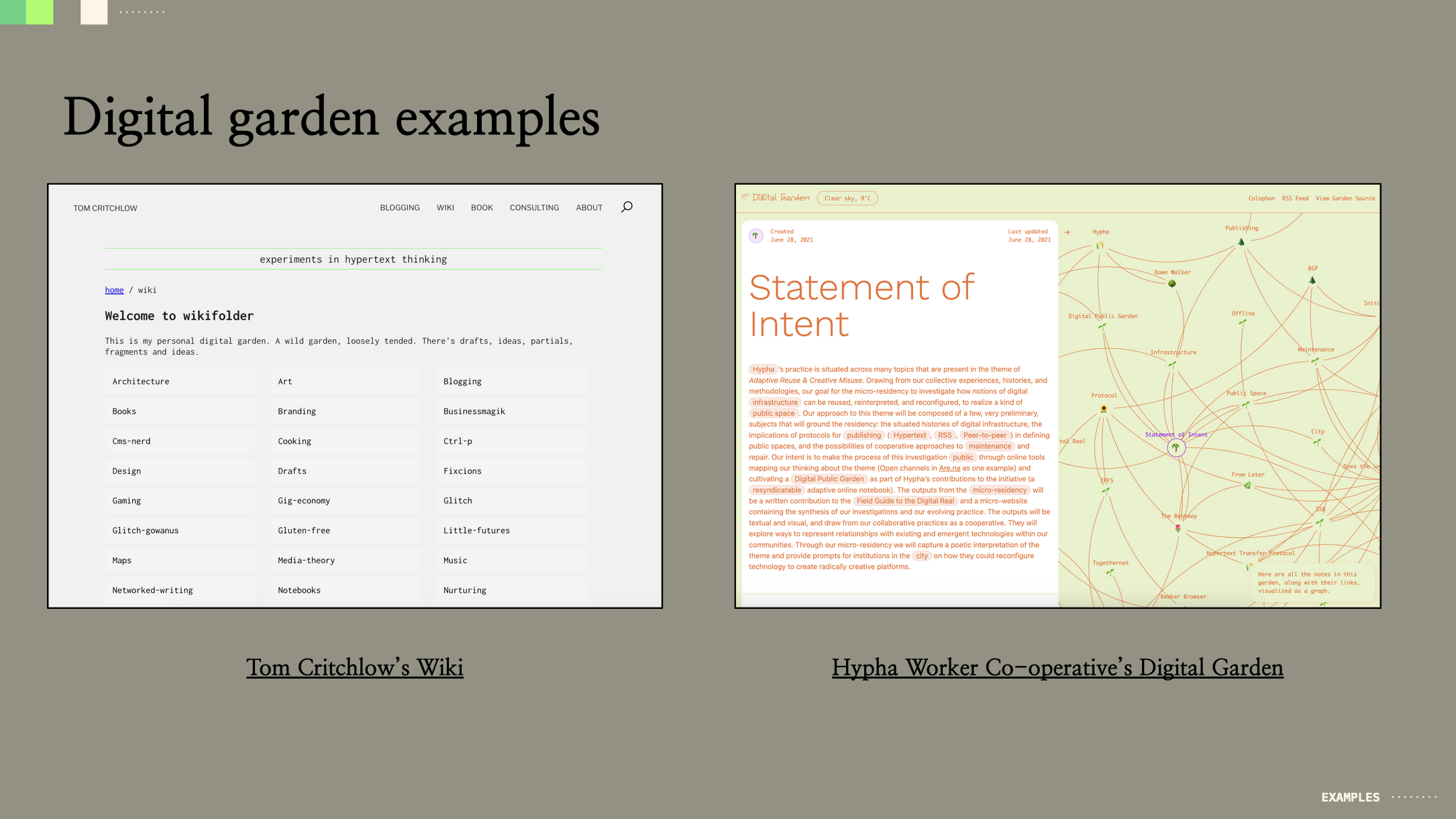
I’ve led How to Build a Hypertext Garden twice now so I’ve had an opportunity to refine the workshop after each run. When I was preparing the workshop for the first time, my main challenge was translating my knowledge of hypertext and Twine into a logical sequence for an audience to follow. The second time around, I paid more mind to the timing of the workshop. Learning from the first run, I hastened the introduction and warm-up exercise to maximize the time that attendees spent in Twine.
As part of my preparation for both sessions, I practiced building my own work in Twine, discovering new affordances and taking note of caveats along the way. This is because prior to the workshop, I had never used Twine. Thus I learned the tool with the intent of teaching it. I was simultaneously a teacher and a pupil, which stands true not just for learning Twine but also for the workshop process as a whole.
I practiced newfound thoughtfulness when I became responsible for people’s understanding of a new concept, and I was humbled by the challenge of orchestrating a room by myself. Through this workshop, I became aware that teaching is an act of learning oneself, and of contextualizing, demonstrating, and translating. I owe this workshop, its attendees, and Jojo and Marii from DSS much thanks for giving me the space to learn through teaching.
